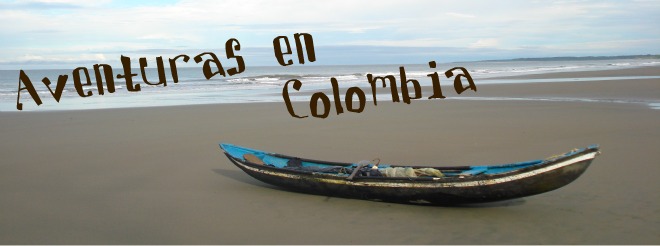 |
| Volcán Puracé |
Despite the misconception that all of South America is beaches and rainforest, people may be surprised to know that I keep a supply of winter hats, gloves, fleece jackets, and thermal underwear on hand in the event I go somewhere cold. Last weekend four other teachers and I joined a tour to the Parque Nacional Natural Puracé, which straddles the southern departments of Cauca and Huila.
While the park's main draw is it's namesake active volcano, our tour also included visits to two of its other unique natural attractions. On the first day we stopped at an overlook of a deep valley where Colombia's only population of condors habitually exist. Condors apparently mate for life, can live up to sixty years, and only lay one egg every two years - a few reasons condors in many parts of the world are endangered. The park workers set out raw meat on a rock outcropping to tempt the enormous birds from the sky, which eventually worked, but only after vultures came and tried to take their food. Vultures, not small birds themselves, looked like little crows next to the majestic condors when they descended to claim the baited meat.
We also made a brief stop at the sulfury-smelling San Juan thermal springs, so named for the river they eventually supply. The river is composed of the confluence of mountain spring water and volcanic minerals mixing together at the site of the thermal springs. This is said to be the second most beautiful river in Colombia.
Superbowl Sunday began with a 4am wake-up call and breakfast, followed by a "¡Vámonos!" rally call and a steady march uphill in the pitch dark. Our ultimate goal: the park's namesake volcano, Puracé, at an elevation of around 4700 meters (about 2.5 miles above sea level). From our lodge at 3200 meters we hiked through some hillside pastures - cows and all - and over some fences until we reached a relatively flat stretch of muddy trenches and moss fields. This part of the hike took us through a unique biome that exists in very few parts of the world called a páramo (English: paramo). Found mostly in Andean locations throughout Colombia, Ecuador, & Venezuela characterized by higher altitudes coupled with cold, wet weather, the páramo is both lush and desolate.
 |
| The frailejón, a shrub plant, is characteristic of the páramo biome. |
 |
| A little after sunrise on the way up; still smiling. |
After a brief pit stop at an old geological monitoring station to take shelter from the chilling wind, we began climbing again. The green landscape turned quickly and dramatically to nothing more than lichen-covered rocks and boulders. The clouds around us thickened until we were walking in an endless expanse of white, the wind began blowing the droplets of water in the air horizontally so that it whipped any exposed flesh on our faces, and the oxygen thinned noticeably.
 |
| Mandi being blown off the mountain a little over half-way up. |
 |
| My "I paid for this?!?" face. |
Finally reaching a semblance of flat ground, my two remaining friends and I found one of the guides with about five other hikers crouched behind some large rocks. The guide then took us about 100 yards more, across what I imagine Mars looks like, to the mouth of the volcano; even this took considerable effort and coercion from my fellow hikers. Feeling equal amounts of exhaustion, nausea, and frustration, we looked into the nothingness, took one quick picture, and headed down to base camp as fast as our weary legs could carry us.
 |
| What we were supposed to see (left) versus what we saw (right). |
Our guide later said that the weather we experienced was more on par with the turbulent season of August, when there are no tours. Predicting the weather atop the volcano is impossible and nothing below can accurately predict what will happen above. While the National Park itself was gorgeous, the páramo enchanting, and the climate a refreshing change from Cali, our volcano hike was more or less one of the more trying and uncomfortable experiences in recent memory. Actually I am not exaggerating when I say that the only sustained event I can think of in the last five years that was worse was when I contracted Dengue.
Manning and I both may have felt like we were on top of the world on Sunday, but I'm pretty sure I was the one who felt like vomiting.







